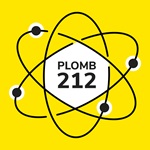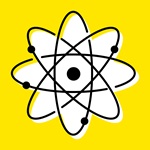
Nuclear industry: New unexpected uses
Orano Med: Harnessing nuclear medicine in the fight against cancer
 In 2009, following the discovery of the process for extracting lead-212 (212Pb), a very rare radioactive isotope derived from thorium, Orano launched Orano Med.
Orano’s medical subsidiary brings together biotechnologies and nuclear technologies to develop a new generation of targeted therapies against cancer using the unique properties of lead-212. Orano Med is focusing all its research
on
targeted
alpha therapy, an innovative technology that combines lead-212 with biological molecules (peptides, antibodies) to target receptors and antigens in cancerous cells. Objective: Recognize and destroy cancer cells in a selective way, limiting
the impact on the surrounding healthy cells.
In 2009, following the discovery of the process for extracting lead-212 (212Pb), a very rare radioactive isotope derived from thorium, Orano launched Orano Med.
Orano’s medical subsidiary brings together biotechnologies and nuclear technologies to develop a new generation of targeted therapies against cancer using the unique properties of lead-212. Orano Med is focusing all its research
on
targeted
alpha therapy, an innovative technology that combines lead-212 with biological molecules (peptides, antibodies) to target receptors and antigens in cancerous cells. Objective: Recognize and destroy cancer cells in a selective way, limiting
the impact on the surrounding healthy cells.
REsolutION: An innovate process aimed at recycling electric vehicle batteries
 Orano is recognized leader with its 40+ years of expertise in all phases of the nuclear fuel cycle, making it a specialist in chemistry of materials, hydrometallurgy, and industrialization of processes. This know-how can be applied to battery recycling via an innovative low-carbon process, making it possible to recover and purify valuable materials in the battery modules (cobalt, manganese, nickel, lithium, graphite), with a view to their reuse in new components.
Orano is recognized leader with its 40+ years of expertise in all phases of the nuclear fuel cycle, making it a specialist in chemistry of materials, hydrometallurgy, and industrialization of processes. This know-how can be applied to battery recycling via an innovative low-carbon process, making it possible to recover and purify valuable materials in the battery modules (cobalt, manganese, nickel, lithium, graphite), with a view to their reuse in new components.

Two industrial pilots are under construction at Orano’s Bessines-sur-Gartempe site(Vienne, France). The goal is to validate the feasibility and performance of the new low-carbon recycling process, with a shift to the industrial scale starting in 2025.
The REsolutION project will also be an opportunity for Orano to contribute to France’s reindustrialization, drawing on technological know-how with high added and environmental value in a European and global electric vehicle market that is experiencing strong growth.
REsolutION is a project supported by France Relance.
MAGNOLIA: An industrial tool for recycling and manufacturing high-performance permanent magnets to foster French sovereignty and the energy transition in France

Since they are used in electric vehicles and wind turbines, two markets undergoing strong growth, high-performance permanent magnets are strategic for the decarbonization of the economy. These permanent magnets systematically comprise rare earths, 80% of which are currently produced in China.
The MAGNOLIA project, launched in April 2022, brings together industrial and institutional partners in the high-performance permanent magnet sector: Orano, Valéo, Paprec, Daimantel France, and CEA. It aims to structure in France a sovereign, competitive, and cutting-edge sector for producing sintered permanent magnets.
Why focus on neodymium-iron-boron (NdFeB) sintered* magnets?
Among the various types of permanent magnets, NdFeB sintered magnets have the best magnetic energy density, making it possible to design electric motors that are more compact, lightweight, and efficient. In terms of their value, they represent 60% of the permanent magnet market, in which the volume of permanent magnets is expected to double over the course of this decade, generating high price tension.
*Sintering is a manufacturing process for parts that consists of heating a powder without causing fusion.
Objectives of MAGNOLIA by 2025:
- Develop innovative technologies for manufacturing sintered magnets in France and for deploying them on pilot and preindustrial manufacturing lines.
- Ensure security of permanent magnet supply and production outside of Asia.
- Lay the groundwork for a competitive sector in France for collecting, dismantling, and re-using electric motors.
- Reduce environmental impact through recycling magnets, reducing manufacturing waste, recovering rare earths, and ecodesigning electrical machinery to favor the dismantling of motors and the recovery of magnets.
MAGNOLIA is a project supported by France Relance as part of the drive to ensure the security of the energy transition and industrial relocalization in critical sectors.
Producing stable isotopes for new applications outside the nuclear industry
 Producing stable isotopes is based on the skills and cutting-edge technologies used by Orano for uranium transformation, conversion, and enrichment. This industrial experience is underpinning the deployment of a new activity outside the nuclear power industry in precisely this field of stable isotope production. The Orano Group is thus offering an alternative in the market for high-purity isotopic and chemical products intended for healthcare, research, and industrial sectors.
Producing stable isotopes is based on the skills and cutting-edge technologies used by Orano for uranium transformation, conversion, and enrichment. This industrial experience is underpinning the deployment of a new activity outside the nuclear power industry in precisely this field of stable isotope production. The Orano Group is thus offering an alternative in the market for high-purity isotopic and chemical products intended for healthcare, research, and industrial sectors.
What is a stable isotope?
Stable isotopes are atoms that do not emit radiation and are thus not radioactive. They are used in a wide range of applications, notable in healthcare, scientific research, and industry.
In the 19th century, the chemist Dmitri Mendeleev created a table to classify the different families of atoms. Among the 118 chemical elements of this periodic table, 80 are stable isotopes.
Stable isotopes: A few examples of concrete applications
- In the healthcare field, stable isotopes are used a base material for numerous medicinal radiocompounds. In this way, they contribute to diagnosing and treating cancers.
- In the field of basic research, stable isotopes are used for numerous sectors of the future, such as quantum computing and fundamental experiments to improve our understanding of matter. For example, the isotope xenon-136 (which occurs naturally at 8.9%) makes it possible to carry out research on matter.
- Concerning quantum computing, silicon-28 promises major advances in the industrialization of quantum chips with thousands or even millions of “qubits”. To do this, researchers need silicon enriched with isotope 28. Natural silicon comprises 92% isotope 28, which is increased to 99.9% after transformation.
- In the industrial sector, the use of natural isotopes is being developed, e.g., to improve the performance of lasers. The use of stable isotopes such as zinc, depleted in zinc-64, also reduces corrosion in the cooling systems of electricity-generating nuclear reactors, as well as limiting waste.
A stable isotope production laboratory at the Tricastin site
Spanning a surface area of 3,200 m2, the stable isotopes production laboratory (LIS) is located at the Orano Tricastin industrial site. Around 20 highly qualified operators make up the team in charge of the stable isotope activity. They include experts in chemistry, enrichment, and quality analysis.In the first phase of developing the stable isotopes, Orano will use the centrifugation enrichment technology. In a later phase, Orano plans to use other technologies to enrich stable isotopes, drawing on its existing know-how and the modularity of the building housing the Stable Isotope Laboratory.